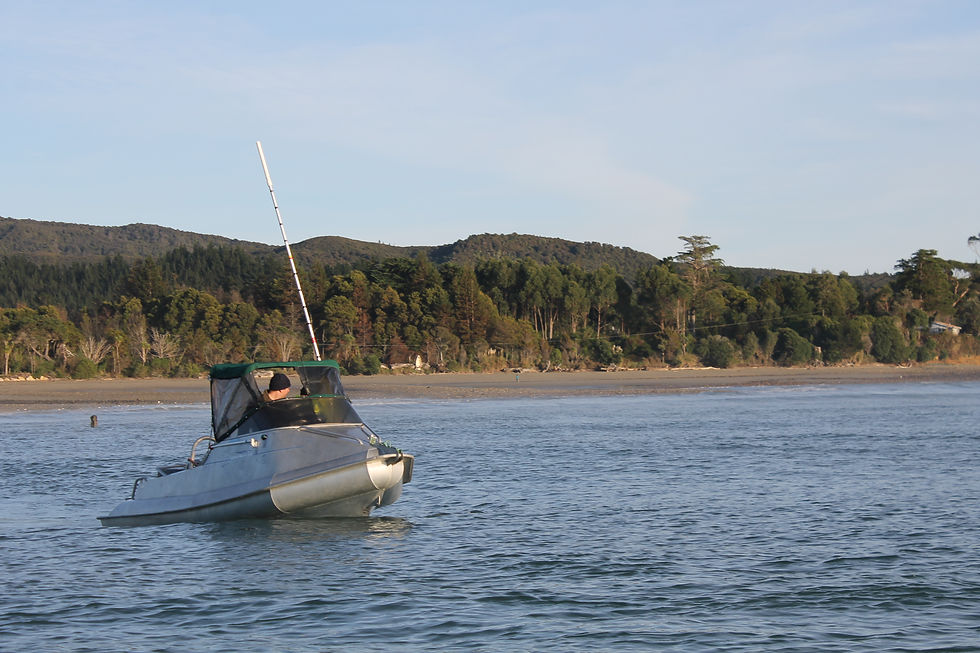SAMPLING AT ONEKAKA WHARF PROJECT
- John MMT
- May 20, 2022
- 2 min read
Updated: Oct 26, 2022
Five MMT supporters - in two boats and a truck - went to Onekaka Wharf in mid-June to conduct some non-invasive sampling of the sea-floor.

The Mohua Marine Trust plans to conduct a feasibility study evaluating the role of artificial reef structures (such as reef balls) in the restoration of marine habitats. Onekaka Wharf is a perfect place for a feasibility study because the collapsed parts of the old wharf have formed an artificial reef of their own accord. The feasibility study is hoped to extend the area of that healthy habitat. In future, artificial reef structures can be placed in other parts of the Bay.

Testing Conditions
The day was bright and clear and very cold. There was an inconvenient roll on the sea making manouvering difficult. The roll also prevented us from beaching a boat and picking up MMT trustee Gene Klein who had come to Onekaka in his truck. He was left on shore to observe from a distance.
Why are we doing it?
The aim of the sampling expedition was to determine the makeup of the sea floor in preparation for the eventual placement of some artificial structures. Knowing whether we'll be placing structures on deep silt, sand, shell or a mixture will have some effect on the size of the structures we experiment with, how they're placed and their proximity to each other.

Sampling Mechanism
The sampling mechanism was designed and built by the Mohua Marine Trust member Alan Hughes, our expert engineer. The mechanism consisted of a long aluminium pole with a flat wooden base at one end and a core-sampler at the other. Putting the flat end on the sea-floor enabled Alan to read the depth of the water off the calibrated markers on the pole. After recording the depth, Alan inverted the pole and took a sample of the sea-floor from a known depth. He then recorded the make-up of the sample (after he had warmed up his hands enough to hold the pen).

More to Come....



Comments